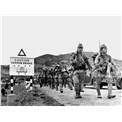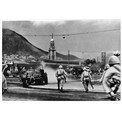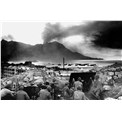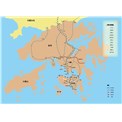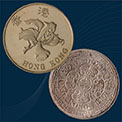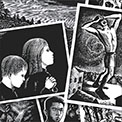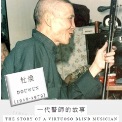-
History & Society
- Education in Pre-war Hong Kong
- History of Taikoo Sugar Refinery
- Hong Kong Products Exhibition
- Local Festivals Around the Year
- Post-war Industries
- Pre-war Industry
- The Hong Kong Jockey Club Archives
- Tin Hau Festival
- Memories We Share: Hong Kong in the 1960s and 1970s
- History in Miniature: The 150th Anniversary of Stamp Issuance in Hong Kong
- A Partnership with the People: KAAA and Post-war Agricultural Hong Kong
- The Oral Legacies (I) - Intangible Cultural Heritage of Hong Kong
- Hong Kong Currency
- Hong Kong, Benevolent City: Tung Wah and the Growth of Chinese Communities
- The Oral Legacies Series II: the Representative List of the Intangible Cultural Heritage of Hong Kong
- Braving the Storm: Hong Kong under Japanese Occupation
- A Century of Fashion: Hong Kong Cheongsam Story
Geography & EnvironmentArt & Culture- Calendar Posters of Kwan Wai-nung
- Festival of Hong Kong
- Ho Sau: Poetic Photography of Daily Life
- Hong Kong Cemetery
- Sketches by Kong Kai-ming
- The Culture of Bamboo Scaffolding
- The Legend of Silk and Wood: A Hong Kong Qin Story
- Journeys of Leung Ping Kwan
- From Soya Bean Milk To Pu'er Tea
- Applauding Hong Kong Pop Legend: Roman Tam
- 他 FASHION 傳奇 EDDIE LAU 她 IMAGE 百變 劉培基
- A Eulogy of Hong Kong Landscape in Painting: The Art of Huang Bore
- Imprint of the Heart: Artistic Journey of Huang Xinbo
- Porcelain and Painting
- A Voice for the Ages, a Master of his Art – A Tribute to Lam Kar Sing
- Memories of Renowned Lyricist: Richard Lam Chun Keung's Manuscripts
- Seal Carving in Lingnan
- Literary Giant - Jin Yong and Louis Cha
Communication & Media- Hong Kong Historical Postcards
- Shaw Brothers’ Movies
- Transcending Space and Time – Early Cinematic Experience of Hong Kong
- Remembrance of the Avant-Garde: Archival Camera Collection
- Down Memory Lane: Movie Theatres of the Olden Days
- 90 Years of Public Service Broadcasting in Hong Kong
- Multifarious Arrays of Weaponry in Hong Kong Cinema
-
History & SocietyGeography & EnvironmentArt & Culture
-
View Oral History RecordsFeatured StoriesAbout Hong Kong Voices
-
Hong Kong Memory
The Battle for Hong Kong
In the early hours of 8 December 1941, Lieutenant-General Sakai Takashi, commander of the 23rd Army of Japan, ordered air strikes on British warships and various strongpoints in Hong Kong: Japanese bombers attacked Victoria Barracks, the Taikoo Dockyard, Kai Tak airport, the barracks of the Indian units stationed in Hong Kong near Fanling and Sheung Shui as well as buildings outside Kowloon City. The destruction of all the British military and civilian aircrafts at Kai Tak airport allowed Japan to secure complete command of both air and sea. On the same morning, Japanese forces crossed the Shenzhen River and entered the New Territories at a number of different points, and they proceeded to seize the Shing Mun Redoubt on the Gin Drinker’s Line. The defending troops retreated to Hong Kong Island, abandoning the Kowloon Peninsula to Japan, which had occupied it by 12 December. Six days later, on 18 December, the Japanese army landed several units at North Point and Taikoo Dockyard. They advanced westwards into Wong Nai Chung Gap on the following day, where they met fierce resistance from the defending troops. Japan had planned the invasion of Hong Kong in meticulous detail and deployed more than 40,000 troops, seriously outnumbering the 13,000 men assigned to Hong Kong’s defence. Close to 2,700 defending troops were killed in action or reported missing during the Battle for Hong Kong, which ended with the city’s defeat after just 18 days of conflict.
Upon learning of the Hong Kong Government’s intention to surrender later in the day, General Chan Chak, the Chinese Nationalist government’s military representative in Hong Kong, decided to break out of the city with his aides and British personnel, 68 men in total, on 25 December. After fierce fighting with Japanese troops, they managed to escape Hong Kong and eventually arrived in Qujiang (present-day Shaoguan), which was still under the control of the Chinese army. In the afternoon of the same day, Governor Mark Young surrendered to Lieutenant-General Sakai Takashi, commander of the Japanese forces, at the enemy’s temporary headquarters in the Peninsula Hotel. The Japanese occupation of Hong Kong, which was to last three years and eight months, began.
Photos
Copyright © 2012 Hong Kong Memory. All rights reserved.






